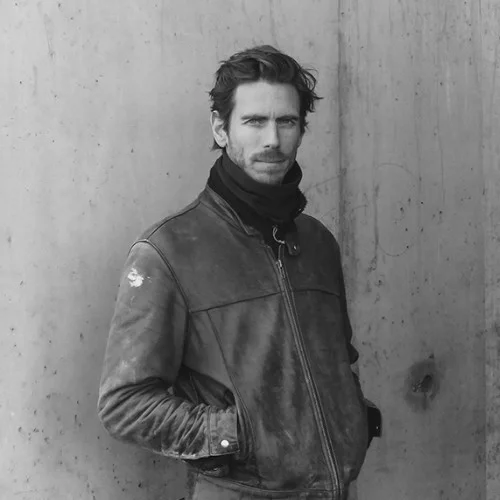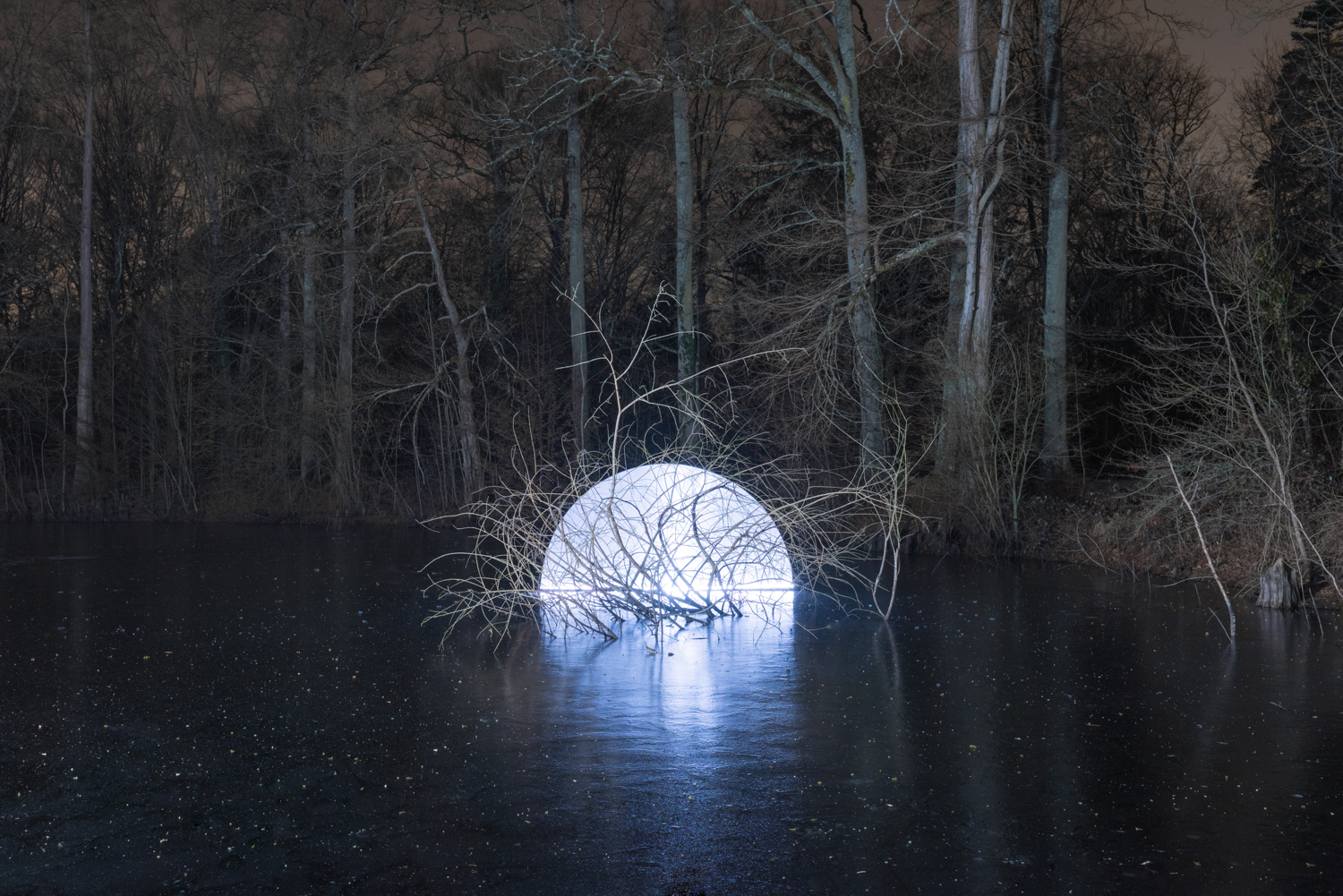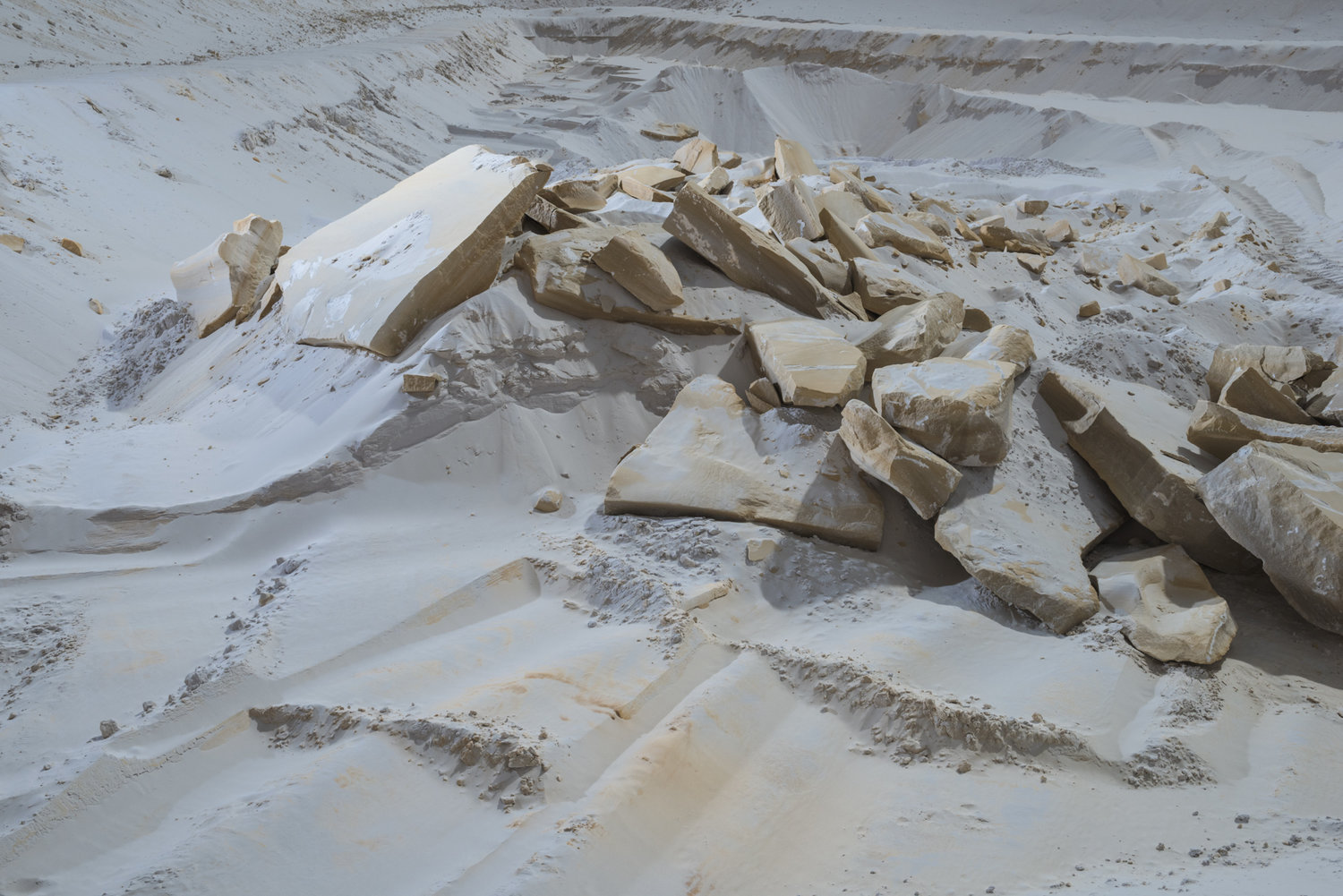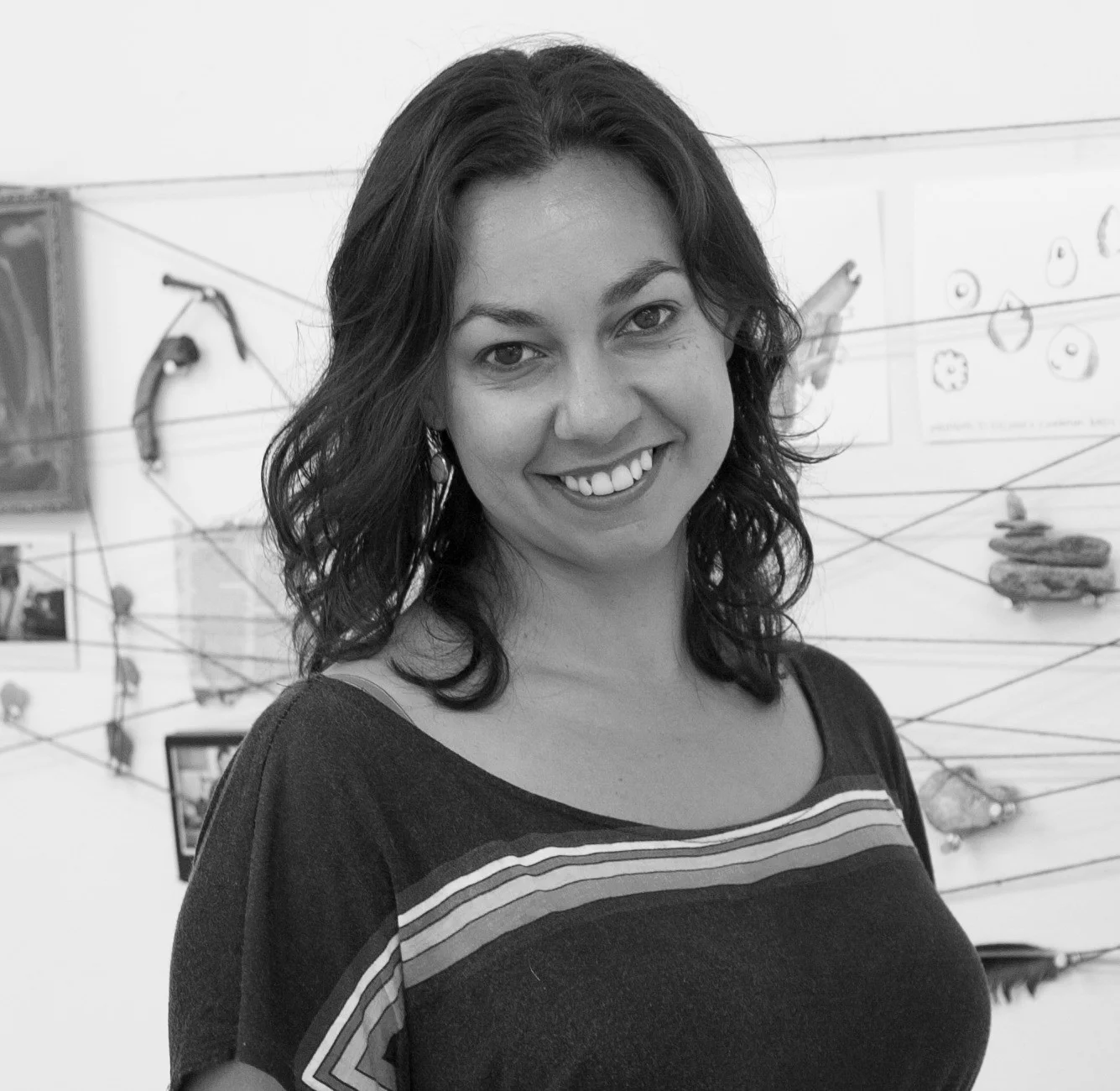ALEXIS PICHOT
From the series Marche Céleste
French photographer Alexis Pichot has gained notice for his images featuring ethereal nighttime light infusions. In this interview, he discusses his methods of creating light infusions in his work, why he made a career switch from interior design to art photography, and the inspirational value of collaborative projects.
Interview by Megan Farrell
You started as an interior designer before pursuing photography full time. What was it like making this drastic switch, and how did your background in interior design help you prepare these fantastical light infusions in your art and for working in such large spaces?
It was my profound desire to express my emotions and creativity without depending on third persons. So when I discovered that I could paint with my own lights during my long time exposure shots, it was strong evidence for me that I wanted to dive more into photography.
Since my childhood, I have been attracted to space and architecture. I am fascinated by the emptiness between objects and how objects interact. Lights and shadows shape the scenes. When I look at a certain scene, I feel really alive and I want to capture it. All this is to say that during my interior design time, I could explore and develop my skills of expressing spaces, colors, and lights.
Speaking of light infusions, the series Les Armées Lumières features many locations illuminated by pointed streaks or sparkler-like beams of light that bend in fantastic waves. Are these effects created on set, or are they added after the photos are taken?
All my lights are created during long time exposure shots. For the series Les Armées Lumières, in a couple of instances I used some fireworks to draw in space.
From the series Les Armées Lumières
Your series Marche Céleste takes place in the Forest of Fontainebleau over the course of many nights. The series of photographs is different than the video of the same name that you co-created with director Maximilien Franco. Is the approach to your work different when shooting video as opposed to still? And what gave you the most difficulty when filming in this location?
When I was creating the series Marche Céleste, I felt it was important to bring the spectator into another way of immersion. In the images I don’t depict myself, but this series is also about my walks at night, so I felt that video would be the perfect media to bring the spectator with me and experience my journey.
I had contacted the production company La Maison Noire and they presented me with Maximilien. He is a person really connected with nature and inspired by the night. It was a really good match for creativity.
The idea was to create a complementary artistic work. We wanted to show that two kinds of art media can live on their own if needed. Creating still images in long time exposures (in general, one image is five minutes of exposure) is very different than shooting video at twenty-four frames a second! So it definitely brings new challenges to creating the art lights.
We shot the movie only during the full moon, to have the maximum of natural light, and we recorded with a really high ISO camera. Also, with my still shots I draw with my lights, meaning that I am in front of the camera holding a light tool and moving with it while the camera is capturing it. With the video camera it was not possible to do that, so we worked on still light installations.
From the series Marche Céleste
Each of your collections focus on specific and unique locations in order to showcase a whole area and really put the viewer in the space. How do you decide on locations to film and photograph? Specifically, how did you work with the Hotel National des Invalides to gain access to military sites in France?
For the Hôtel National des Invalides, it all began with one of my clients who ordered an image of the facade with my light creation. To make it happen, I had to contact the communication office. I asked them for authorization. They were really interested and curious, so they gave me the opportunity to spend one night there with my lights. After seeing the result, they offered to let me create more images and put together an exhibition. That was how I gained access to all those military facilities.
Now I’m gonna be mystical! Aside from the series Patrimoine enchanté and Les Armées Lumières, the rest of my series have been chosen by an inner movement, inner emotions, and an inner creativity which brings me to those places. While I am creating these images, the story is not written yet. It is a long process to connect with myself and to see why I am doing this.
Many of your collaborations are created alongside artists that do not work in photography, leading to an integration of two different areas of art in the final piece. However, The Blossom Project was created with another photographer, Isabelle Chapuis; what was it like to merge two different photography styles, and how did the two of you decide to start this project?
Collaboration is a very interesting process. It brings two creative people together and gives birth to a new vision. It is a beautiful process. A month after we met with Isabelle, a friend shared with us a photography contest called “Paris, I Love You.” We felt the desire to create together, so we decided to spread a pink cloud under the Carrousel Bridge in Paris. We came in second at the contest, and that is how the Blossom series was born.
Isabelle is inspired by so many materials, such as smoke, powder, hoarfrost, cotton candy, vegetables…She reinterprets these materials in her photographic work. She is in constant search for organic metamorphoses. Emotion is the driving force of her creative process and the human is at the heart of her work. The merging of our two visions, materials and spaces makes Blossom come alive.
The Blossom Project is incredibly interesting, not only because it was a project that spanned many countries, but because of the smoke installations that explode into vivid colors among the landscapes. Being such an environmentally conscious person, were you at all worried about the impact that these installments would bring to the areas you shot?
It was definitely part of our awareness and we tried to find the best materials to create the installations. I can’t say that there is no impact but this is part of the process, to be more and more conscious about it and do the best we can to change the mentalities. Our series is a celebration of nature and it raises awareness of the intrusions of mankind into natural territory. It is too easy to say to an Edward Burtynsky or a Yann Arthus-Bertrand, “look at the impact of the use of a helicopter to make your photography!” When you see the influence of their work on the protection of nature, there is no argument for me. All of it depends on the original intentions and about the technologies available at that time.
From the series The Blossom Project
Many of your works take place at night in order for your style of creating alien light in natural and everyday places to be fully realized. How is the scouting process for darker locations different from daytime shoots? How long does the setting up of the artistic designs take, especially considering some locations may be inhabited by people and wildlife during the day?
Scouting during the day is not easy because the scenery changes drastically when it becomes dark. It often happens that I see a space in sunlight and when I come back at night I do not feel the same attraction. And the inverse is also true.
My light creations are mainly realized during a long time exposure, meaning that I physically intervene with my lights by painting in the space. Sometimes I do light installations if I can’t do what I have in mind, but I prefer to perform them live. In those cases, I need less materials and it is easier to explore a scene when I am alone doing my creations.
Most of the time I don’t see people, nor wildlife. I can hear and smell animals but in general they don’t come close to me.
There are two series, Light and Paper and Patrimonies Enchanté, which both use a similar neon lighting that comes across as a neon wall of color within the areas. These fixtures give an alien, almost ethereal glow to the spaces. What materials did you use to create this look, and are these two series linked by anything other than the similar lighting fixtures?
Concerning lighting, I have different tools such as torches, LED bars and a drone equipped with lights to illuminate the landscapes.
For these two series, I used a two meter stick bar LED with a specific color program. They are both related to architecture spaces and industry heritage.
From the series Patrimonies Enchanté
“Sharp edges, iridescent valleys, vertiginous cliffs and wavy bodies, symbol of the matter that receives and reflects light, source of life.” This is one line of a piece of prose you chose to accompany Selene, a series of photos of snow-covered landscapes and mountains. With areas such as this, how were you able to capture the photos you wanted without disturbing the landscape, specifically without the ability to move freely through the snow and create footprints? What was it about this site that drove you to deviate from your style of elevating spaces with man-made light, to a more natural view lit by the area itself?
I do not specifically refer to snow in my text, and it is not exactly my goal. I want the viewer to create their own story. This series is about losing space and time and diving into an imaginary world.
For me, I did not deviate from my style, as in every picture there is my light intervention. But I use it in a different way, more subtle, feeling it without clearly seeing it, made to be close to natural light without being totally natural. My series Marche Céleste was the transition of how I wanted to express my lights.
From the series Selene
Main page photo of Alexis by Laurent Kronental
LINKS:
View more of Alexis’s photography on his site and on Instagram.
You might also like our interviews with these photographers:
Megan Farrell is a twenty-two year old writer and filmmaker who lives in New Jersey. She has recently graduated from the University of Alabama with a dual degree in Telecommunication/Film and Economics. In her spare time, Megan enjoys amateur photography and playing tennis.




















